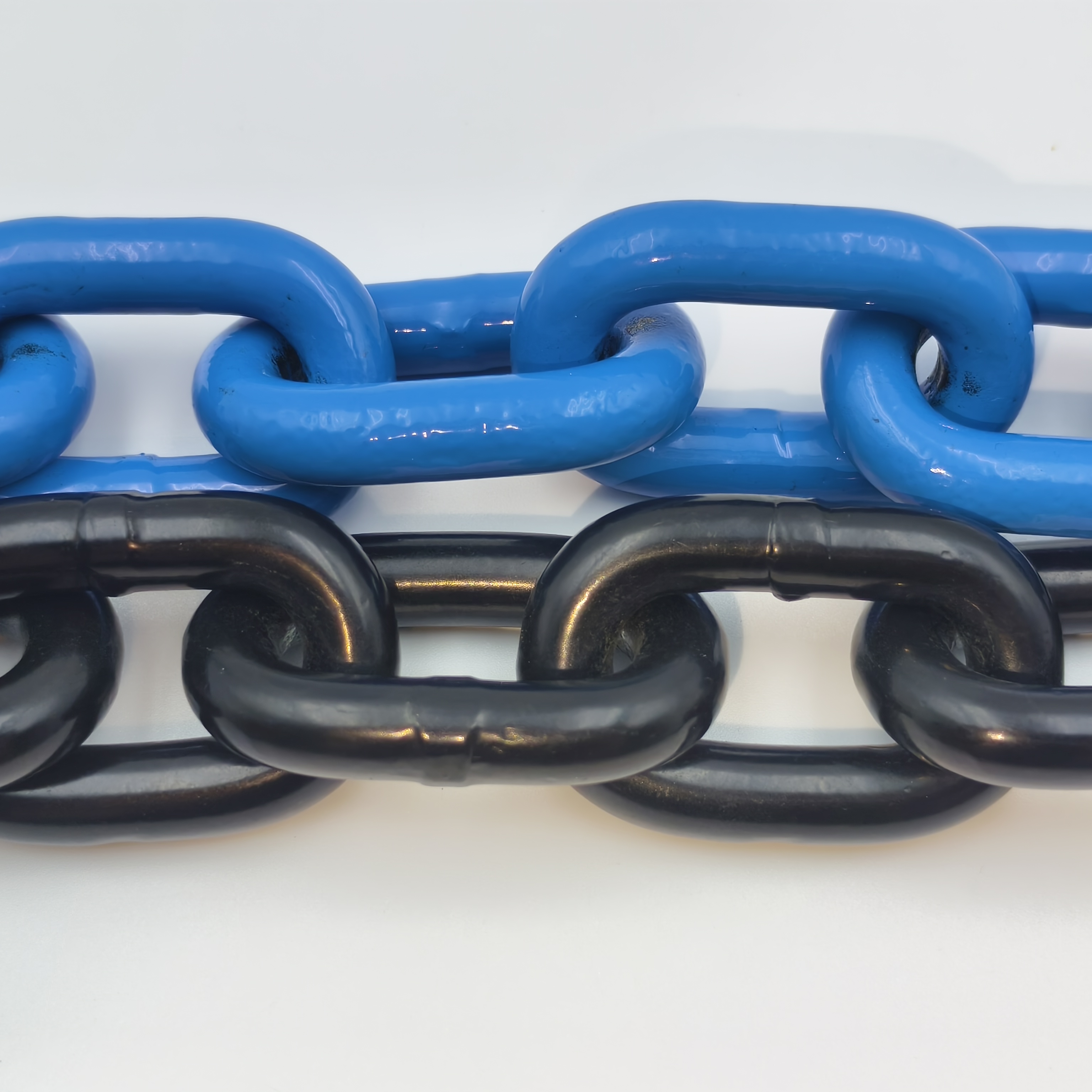Our staff will contact you within 12 hours, You can also contact us through the following ways:
Contact US WhatsApp: +86 18263873187
- Email: [email protected]
- Tel: +86 18263873187
- Web: www.lifting-chain.com
Both G80 and G100 belong to the same family of quenched-and-tempered alloy lifting chains, yet they serve different priorities on the hook. You plan chain lifting around Working Load Limits (WLL), headroom, rig weight, and component pairing. G100 typically delivers about 20–25% more WLL than the same-diameter G80, so planners often drop one size to save weight and open hook throat clearance. However, G80 still shines in general construction, rentals, and budget-sensitive jobs. This guide compares strength, size, temperature range, chemicals, edge protection, availability, and lifetime handling so you select the right lifting chain before you browse chain slings for sale.
G100 raises the strength benchmark at a given diameter, so you often reach the target WLL without upsizing. That single shift unlocks practical gains: you lighten the sling set, you improve hook seating, and you keep more stroke in tight headroom. G80 answers with robust value and wide component availability, which many crews prefer for everyday lifts and mixed fleets.
At-a-Glance Comparison
Topic | G80 (Grade 80) | G100 (Grade 100) |
Relative WLL (same Ø) | Baseline | ↑ ~20–25% |
Diameter for same WLL | Larger | Smaller |
Headroom for same WLL | Lower | Higher (more stroke) |
Typical choice | General construction, rentals, fab shops | Tight headroom, high-cycle lines |
Component pairing | G80 hooks, shorteners, master links | G100 hooks, shorteners, master links |
Always match every component to the sling grade. You keep traceability and preserve the marked WLL only when hooks, shorteners, coupling links, and master links carry the same grade as the chain.

You pay more per metre for G100; however, you may drop one diameter and recover the difference at assembly level. Lighter sets reduce handling fatigue and speed inspections, so high-cycle plants often recoup the premium in labor and uptime. For broad fleets and rapid replacements, many buyers still favor G80 because distributors stock it deeply and crews already know its look, feel, and tags. Compare total cost of ownership, not just the first invoice.
Both grades follow the same temperature guidance that riggers already trust:
−40 °C to +200 °C: run at full rating.
200–300 °C: derate by 10%.
300–400 °C: derate by 25%.
Outside −40/400 °C: remove from service.
Keep either grade away from acids, alkalis, and pickling. If contamination occurs, rinse with cold water, dry thoroughly, and send the sling to a competent inspection before you reuse it. Coatings and plating change dimensions and can affect performance; get written approval before you modify finished slings.
Angles multiply leg tension, so you lock the angle band early and size from the table rather than guess. Use corner pads or spreaders anywhere links meet edges; then apply simple, documented reductions: R ≥ 2d → no reduction, R ≈ d → ×0.7, sharp edge → ×0.5. You protect the chain and the load at the same time, and you get consistent results from plan to lift.
Angle Factors (quick reference)
Configuration | Angle to Vertical (β) | Factor (×) | Notes |
Single-leg | 0° | 1.0 | Vertical pick |
Two-leg | 0°–45° | 1.4 | Default planning |
Two-leg | 45°–60° | see table | Capacity drops |
Three/Four-leg | 0°–45° | 2.1 | Balance legs |
Three/Four-leg | 45°–60° | 1.5–1.6 | Check tag/table |
Choker | — | 0.8 | Reduce 20% |
You still read the manufacturer’s WLL table for your exact chain and hardware. The table governs, and your math follows it.
G100’s smaller size for the same WLL trims sling mass and reduces bulk at the hook, which helps technicians carry, hang, and clean sets across shifts. G80’s larger links give inspectors generous surfaces for stamps and tag access, and many shops keep spare G80 components on hand for quick swaps. Regardless of grade, you protect the investment when you:
Gauge average link diameter and five-link pitch; retire at 10% wear or ~3% stretch.
Check hooks for throat growth >10%.
Reject cracks, deep nicks, heat tint, or stiff articulation.
Back-hook unused legs to the master link so nothing snags.
Store dry, hang on racks, and log each inspection with date, measurements, and actions.
You can make a clear decision in minutes if you keep the steps tight and evidence-based.
Quick Selection Table
Step | G80 Path | G100 Path |
Define the job | Write the heaviest routine load and sketch lift points | Same |
Lock angles | Plan β ≤ 60°, target 45° when possible | Same |
Read the table | Pick first Ø whose WLL clears the math | Check if one-size drop still clears |
Check fit | Confirm hook throat clearance and pocket fit | Confirm smaller Ø improves headroom |
Handle & inspect | Use shorteners, protect edges, record the tag | Same (lighter set speeds handling) |
Decide | Favor robustness and simplicity | Favor weight/headroom and high cycles |
This side-by-side view removes guesswork while you browse chain slings for sale and match assemblies to your drawings.
Pick G80 when you outfit construction sites, rental fleets, fab shops, and general MRO. You gain proven availability, straightforward service, and predictable budgeting.
Pick G100 when headroom runs tight, cycle counts climb, or crews move slings all day. You lighten every set, reduce bulk at the hook, and keep stroke where cranes need it.
Still unsure? Start with the heaviest routine load, apply the correct factor for your geometry, and open both WLL tables. If G100 allows one size drop while meeting fit checks, you gain weight and space. If not, you stay with G80 and enjoy deep stocks and simple logistics.
Choose G80 for robust value and broad availability, or choose G100 for higher capacity, smaller diameter, and smoother handling—then request a traceable quote from TOPONE CHAIN today.